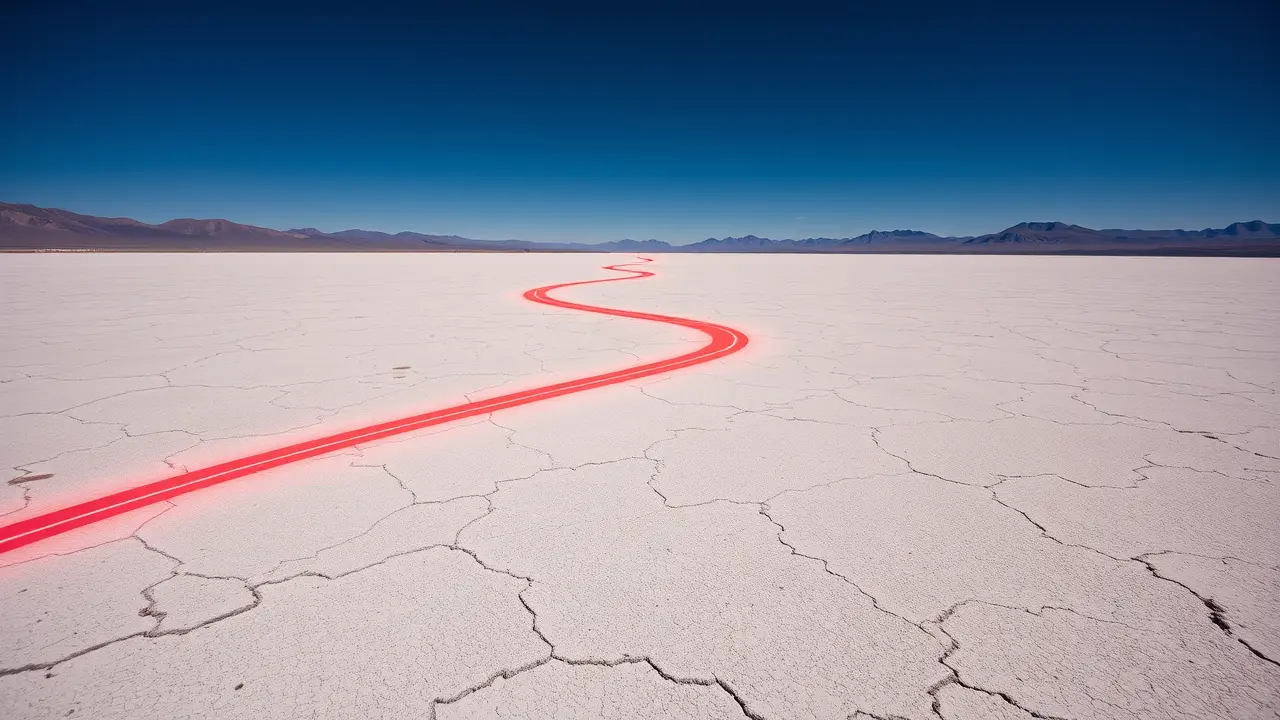
Entertainmenttheatre & artsArt Exhibitions
Red Line Land Art Installation Spans California Desert by Gregory Orekhov
RA
Rachel Adams
12 hours ago7 min read2 comments
Stretching for a full kilometer across the desiccated expanse of California's El Mirage Dry Lake, the stark red polypropylene line of Gregory Orekhov's latest land art installation, 'Red Line,' forms a jarring geometric incision upon the cracked desert floor. This is not a subtle intervention; it is a deliberate, almost violent, human gesture imposed upon one of the most fragile and unforgiving ecosystems on the continent, a vivid scar of synthetic material that forces a confrontation between our relentless creative impulse and the profound, ancient silence of the natural world.The work exists in a lineage of monumental earthworks, harkening back to the audacious gestures of Robert Smithson's 'Spiral Jetty' and the stark lines of Walter De Maria's 'The Lightning Field,' yet Orekhov's piece feels distinctly contemporary in its urgent, almost accusatory simplicity. It speaks to the Anthropocene, an era defined by humanity's indelible mark on the planet, and asks the viewer to consider the cost of such markings.The polypropylene itself, a petroleum-derived polymer, is a quiet but potent symbol of the very industrial processes that drive climate change and ecological degradation, its vibrant, unnatural red a stark contrast to the muted tans, ochers, and bleached whites of the desert palette. This choice of material is far from incidental; it transforms the artwork from a mere visual spectacle into a critical commentary, a beautiful yet troubling monument to our complex, often destructive, relationship with the environment.The installation's location is equally significant. The California desert is not an empty void but a living, breathing biome teetering on a precarious edge, home to resilient but vulnerable species like the desert tortoise and unique floral communities that have adapted to extreme aridity.The visual impact of the red line, while breathtaking from an aerial perspective, raises critical questions about the environmental footprint of such large-scale art. What is the impact of its installation on the cryptobiotic soil crusts, those delicate, living networks of cyanobacteria, lichens, and mosses that prevent erosion and fix nitrogen? How does the presence of this human-made object affect the migratory patterns of local fauna or the fragile silence that defines the desert experience? While many land artists of the past sought a form of harmony or a revelation of the land's inherent forms, Orekhov's work seems to embrace a necessary dissonance, holding up a mirror to our own disruptive presence.It functions as a powerful, non-verbal essay on boundaries, both literal and metaphorical—the lines we draw on maps, the borders we cross, and the ultimate, irrevocable line we are collectively crossing with our escalating environmental impact. The work does not offer easy answers; instead, it sits there, a brilliant red question mark etched into the earth, challenging us to look beyond its aesthetic power and contemplate the deeper, more uncomfortable truths about our place in a world we are rapidly and irreversibly altering. The conversation it sparks is its true legacy, a dialogue that extends far beyond the art world and into the realms of ecology, ethics, and our collective future on this planet.
#featured
#Gregory Orekhov
#land art
#installation
#California desert
#red line
#contemporary art
Stay Informed. Act Smarter.
Get weekly highlights, major headlines, and expert insights — then put your knowledge to work in our live prediction markets.
© 2025 Outpoll Service LTD. All rights reserved.